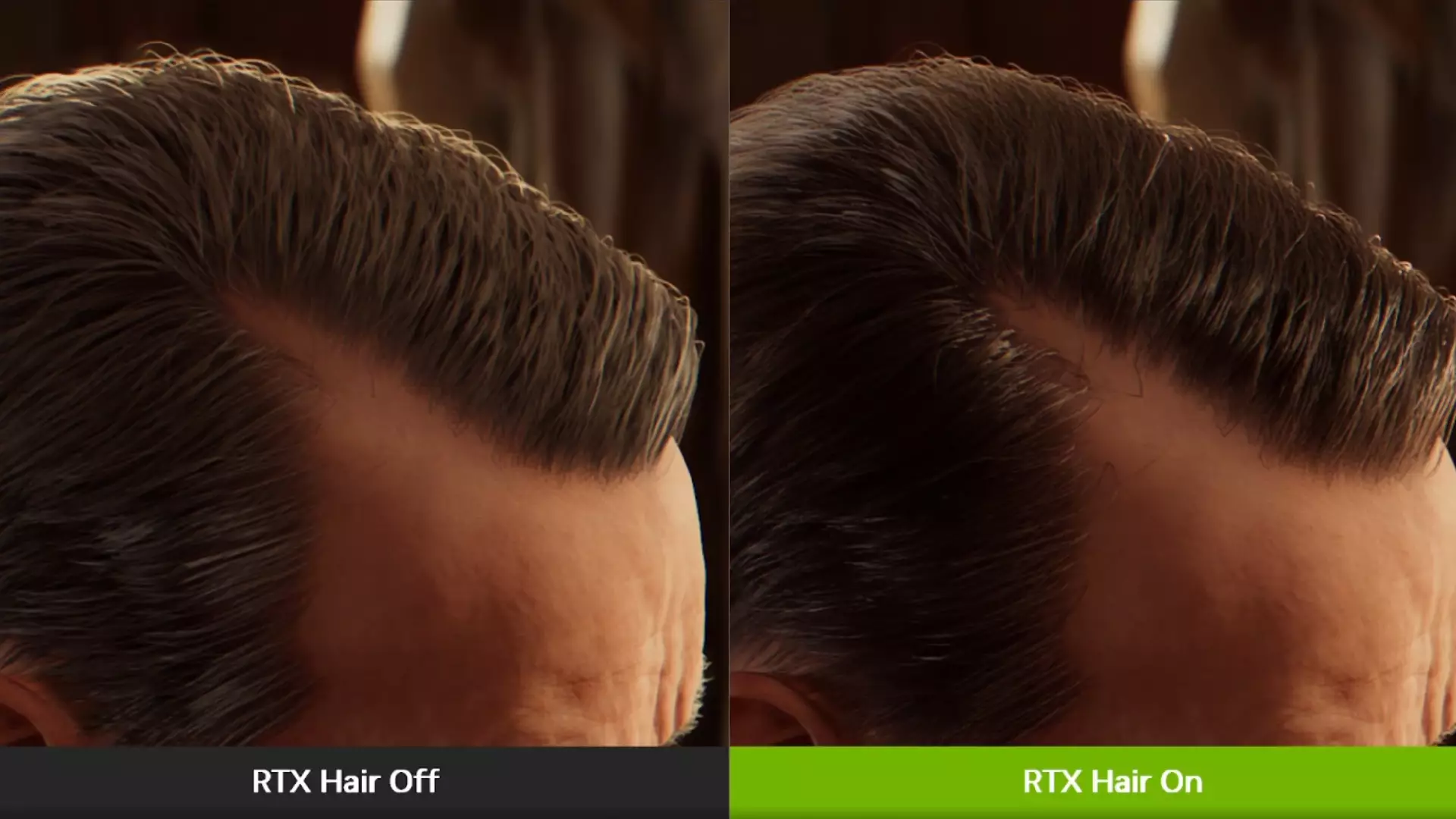In the rapidly advancing world of video game graphics, achieving photorealistic realism remains a pinnacle goal. Among the myriad elements contributing to lifelike characters, hair stands out as a particularly complex challenge. For gamers and enthusiasts alike, convincing hair not only enhances character immersion but elevates the overall visual fidelity of a game. Nvidia’s latest RTX Hair technology promises to push this boundary significantly. If executed well, it could redefine what players expect from character design and animation, transforming digital hair from a computational headache into a showcase of technological prowess. Not merely a cosmetic upgrade, this innovation signifies a meaningful stride toward immersive, believable virtual worlds where every strand counts.
From Outdated Techniques to Cutting-Edge Innovation
Historically, the rendering of hair in video games has been a compromise—a balancing act between visual quality and performance constraints. Previous systems relied heavily on tessellation to simulate hair strands, a process that quickly becomes a resource hog. For instance, Nvidia’s HairWorks famously brought dynamic, wind-blown hair and furry creatures to life, but at a substantial cost to game performance and framerate consistency. This often led players to disable or downgrade such effects, sacrificing visual fidelity for smoother gameplay.
Enter Nvidia’s RTX Hair, powered by the advanced capabilities of the RTX 50-series GPUs. The technology introduces a novel rendering primitive called Linear Swept Spheres (LSS), a radical departure from traditional tessellation. This method models individual hair strands with geometric efficiency, enabling more accurate shape fitting while significantly reducing VRAM usage. The result is not only visually superior but strategically advantageous for developers aiming for high-detail animations without grinding performance to a halt.
Transformative Potential for Gaming and Beyond
What makes RTX Hair truly groundbreaking isn’t simply the promise of more realistic hair—that’s almost an expected feature in high-end graphics—but the ingenious way it addresses longstanding technical roadblocks. In terms of visual quality, it seems poised to produce hair that responds convincingly to lighting and shadows, capturing the subtle nuances of real-world hair dynamics. This level of detail could lead to more emotionally compelling characters, where a single strand’s glint or shadow enhances storytelling.
Furthermore, the efficiency of this technology could democratize high-quality hair rendering, encouraging developers to introduce more elaborate character customization and expressive animations. Potentially, future games could include characters with head-turning, wind-swept hair or meticulously detailed hairstyles that remain performant across devices. As Nvidia’s previous innovations have demonstrated, such advancements often ripple beyond gaming, influencing fields like cinematic rendering, virtual fashion, and digital avatar creation.
However, skepticism remains warranted. Throughout history, new rendering techniques—like HairWorks—have often fallen short of their hype, limited by hardware constraints or inconsistent implementation. The real test will be in how seamlessly RTX Hair integrates within game engines and whether developers can leverage its capabilities fully without overextending system resources. Despite these uncertainties, the apparent advancements signal that we are inching closer to a future where digital hair not only looks good but behaves convincingly in dynamic environments.
Chasing the Dream of Perfect In-Game Hair
Ultimately, Nvidia’s RTX Hair could be a game-changer—or just another technological misstep depending on its real-world application. Yet, there’s an inherent optimism in pushing the envelope of visual realism. For those of us who spend countless hours styling, caring for, and marveling at hair in daily life, the allure of seeing that detail faithfully represented in games is undeniably compelling.
While the tech’s full potential remains to be seen, it’s clear that the industry is committed to evolving beyond the grainy, unnatural hair effects that have long plagued digital characters. If Nvidia’s innovation can fulfill its promise of delivering both top-tier visual quality and performance, it might catalyze a new standard for character visuals—turning game worlds into more convincing, immersive landscapes where every strand tells a story. The future of in-game hair isn’t just about aesthetics; it’s about understanding that the devil—and maybe even the hero—is in the details.

